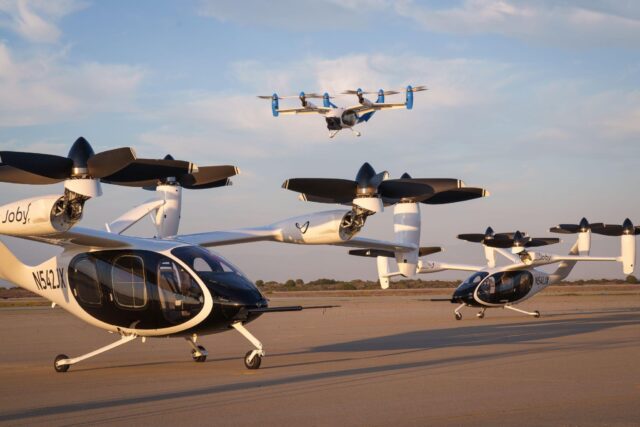Air travel sector needs to reshape now to create stability – EY
The air travel sector needs to reshape now to create the stability and agility it needs to meet the short-term challenges of the recovery – and to adapt to the…
The air travel sector needs to reshape now to create the stability and agility it needs to meet the short-term challenges of the recovery – and to adapt to the more fundamental long-term challenges ahead, writes Mike Parr, Parter at EY-Parthenon
With airline bookings bouncing back as Omicron travel restrictions ease, hopes are high for a strong summer season, fuelled by pent-up demand for business travel and holidays. The sector’s glass seems half-full yet again, but the positivity of this rebound shouldn’t distract from the short and more fundamental long-term issues facing airlines and the wider aviation ecosystem.
This still isn’t a normal travel environment, and we won’t know what normal looks like for some time. We’re in a catch-up period in which customers look set to prioritise long-delayed holidays, creating an early season surge in demand. The impact of a steep rise in the cost of living could curtail this surge, direct customers towards lower-cost options, or delay bookings until later in the season. EY ITEM Club expect consumer spending to grow by 5.7 per cent in 2022, which is still strong, but less than the 6.8 per cent growth forecast last autumn. Meanwhile, COVID-19 continues to hit staff availability and creates continued uncertainty over international travel, which leaves the potential for further travel disruption.
Unpredictability puts pressure on working capital
This high level of unpredictability makes it hard to plan. It also keeps the pressure on working capital, as will the more intense seasonality of demand that results from leisure bookings recovering quicker than business travel. Additionally, as bookings pick up, merchant acquirers are reviewing their terms and risk appetite in sectors, like travel, where there can be a long delay between payment and delivery of goods and services. Changes to merchant acquirer terms and conditions can result in dramatic working capital and cash impacts against what are now much heavier balance sheets.
Just to add to the short-term issues facing the sector, it’s facing inflationary issues of its own with rising fuel, airport, and wage costs. Although the availability of staff may be as much of an issue as cost if the sector is to scale up quickly enough to capture rising demand. Travel and hospitality sectors are at a considerable disadvantage in the war for talent. After two years of uncertainty, many employees have looked elsewhere for more stable employment.
Beyond these short-term hurdles, airlines, and the wider aviation ecosystem face longer-term, fundamental uncertainties. In the last year, the industry has pivoted from survival to recovery mode. But it also needs to think beyond this short-term uplift to how it will reshape to meet new patterns of demand, as well as the sector’s uncertain and difficult path to net zero.
Leisure passenger levels unlikely to recover until 2025
EY’s Aviation Tracker underlines the scale of the demand challenge ahead and the backdrop to this sustainability journey. EY’s base case scenario shows overall UK passenger numbers returning to 2019’s volumes, but not until 2025, whilst business travel doesn’t return to 2019 levels within the ten-year timescale of our model, as companies continue to use virtual collaboration tools to reduce their travel spend and carbon emissions. Meanwhile, record levels of aerospace profit warnings recorded by EY in 2020 and 2021 underlines the wider impact of COVID-19 on the aviation ecosystem, exacerbated by the current supply chain crisis.
The scale of this challenge means that companies cannot wait for uncertainty to lift. Businesses need to act now to ensure that both they and their value chain have the stability and agility to meet both the short-term challenges of a volatile recovery and the long-term reshaping of their sector. We’ve identified three priority areas for companies to address:
Stabilise: Companies will need the financial and operational flexibility to manage potentially significant swings in demand in 2022. They need to identify and address weaknesses in their own business and their value chain – and scenario plan for different types and speeds of recovery. Attracting talent is a priority and companies need to think about how they create attractive opportunities that provide the flexibility and stability that employees have sought elsewhere.
Adapt: Demand is recovering, but the growth trajectory is shallower and the profile more oriented towards leisure travel than before the pandemic. Parts of the sector most reliant on business travel will need to learn to adapt to a lower average fare and greater seasonality. They need to rethink capacity, routes, and profile of planes – but also how they can position their offering to attract back business travellers.
Innovate: Technological innovation will play a significant part in decarbonising air travel. But in the meantime, the sector needs to think holistically about decarbonisation and what progress it can make now within its own business and across its supply chain to meet the needs of stakeholders (for example banks linking funding to ESG targets) and to attract customers – especially business customers with their own net zero targets.
Subscribe to the FINN weekly newsletter
















